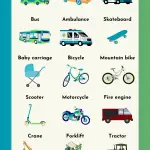If you’re looking for some tips, tricks, and activity ideas for teaching English using technology, then you’re certainly in the right place. Check out these important guidelines for using tech to teach English. Keep on reading for all the details you need to know for using ESL technology in style and having the best ESL technology lesson plan!

Teaching English Technology
Guidelines for Using Technology for Teaching English (and Other Languages)
There are certainly some best practices when it comes to using tech in any classroom. Here are some of the most important ones for using technology in ESL classrooms.
Understand the Technology
The key to using technology in the classroom is to understand how to use it yourself! This will be obvious to people reading this book, but it’s still worth stating. If you’re not familiar with the ins and outs of a certain website or program, get familiar with it in your own time before bringing it into the classroom.
- Amazon Kindle Edition
- Bolen, Jackie (Author)
- English (Publication Language)
- 128 Pages - 11/18/2021 (Publication Date)
Offer Tech Support to Students
Don’t assume that all students are pros at all things Internet. You may have to help some students out with things like submitting homework online, uploading a video, etc. However, the best source of support is often using Google search in their own language.
That said, I do have office hours each week and offer to help students who are struggling with the tech during that time. Or, I can offer some assistance in a few minutes after the class ends.
What’s the Goal for Technology in the ESL Classroom?
Don’t use technology just for the sake of using technology. It should have a learning outcome attached to it. And of course, like with any other “old-school” ESL lesson, there should be an ESL technology lesson plan!
Come Early to Turn on the Computer!
You never know when the computer is going to update! It can sometimes take 5-10 minutes which isn’t ideal if you’ve only come 1 minute early to class. So come early, if possible, and fire everything up. You’ll have time for troubleshooting if necessary.
Looking to teach virtually? You’ll want to check this out:
Best Online English Teaching Companies, including Yeko and SayABC.
Have a Backup Plan for ESL Technology
Going along with the guideline from above, have at least a minimal backup plan in case of a technology catastrophe. Mine usually involves giving access to my PowerPoint slides using Google Drive. In case the computer console doesn’t work, students can follow along easily enough on their phones.
If your students don’t have smartphones for whatever reason, have a lesson that can be pulled out at the last minute that doesn’t require any materials or technology. I usually have one of these lessons for each level I teach in the back of my mind.
Test the Volume and Picture from the Back of the Class
It may be obvious, but it’s also worth stating! For ESL listening activities, test the volume of audio things before class starts.
During class, if you ask students, “Can you hear it?” they’ll usually say yes, even if they can’t! It’s best to test this out yourself by physically walking to the back of the class. This is also an opportunity to see if the screen or monitor is visible from the back of the classroom.

Technology for ESL Classroom
Not all Students Have Smartphones
These days, it’s easy to assume that most students have smartphones. It’s generally a good assumption. But, there are always 1-2 students a semester who don’t, for whatever reason. I think about this when I’m designing my ESL lesson plans and ensure that these students are not left out.
Back Up Important Things
It has never happened to me (knock on wood), but I do have some fear about losing something very important online, like grades. While I do use Google Drive spreadsheets for grades, I quickly print off a copy of it after I enter grades for tests or homework. Then, it goes into a forgotten drawer in my desk, just in case, I might happen to need it. Another option is to take a picture with your phone after making changes to anything important.
Don’t Hide Behind Technology for Teaching English
When it comes down to it, teaching is all about a relationship. Don’t hide behind the technology. Students will be better served by a kind, knowledgeable teacher who cares about them and their English progress than by all the flashy PowerPoints in the world. This also applies to teaching English online!

ESL Technology Lesson Plans for Teaching ESL
Foster Interactive and Collaborative Learning
Encourage students to use technology for interactive and collaborative language learning activities. Virtual discussion forums, online language exchange platforms, or collaborative document editing tools can facilitate communication and collaboration among students.
Use Gamification and Interactive Activities
Incorporate gamified elements and interactive activities through language learning apps or online platforms. This can motivate students, make learning enjoyable, and provide immediate feedback on their progress.
Personalize Learning Experiences
Leverage technology to tailor language learning experiences to individual students’ needs. Adaptive learning platforms or language learning apps that offer personalized content or adaptive exercises can help students learn at their own pace and focus on areas that require improvement.
Encourage Self-Study and Independent Practice
Recommend or provide resources that allow students to continue practicing language skills outside the classroom. This may include language learning apps, online language courses, podcasts, or websites with interactive exercises.
Evaluate and Monitor Progress
Use technology tools that enable you to track students’ progress, assess their language skills, and provide feedback. Online quizzes, language proficiency assessment platforms, or learning management systems can assist in evaluating students’ language development.
Stay Up-to-Date with Technology Advancements
Keep abreast of new technology tools, apps, and resources that emerge in the language learning field. Attend conferences, participate in webinars, or engage in professional development activities to stay informed and explore innovative approaches to technology integration.
Technology for Teaching English: Games, Activities, and Resources
- Amazon Kindle Edition
- Bolen, Jackie (Author)
- English (Publication Language)
- 128 Pages - 11/18/2021 (Publication Date)
Do you want to implement more technology in your language learning classroom but aren’t sure how to go about that? Not to worry! Help is here. Check out this helpful book on Amazon: ESL Technology Games, Activities, and Resources. It’s everything you need to level up!
Head over to Amazon to pick up your copy of the book today and get ready for more technology in the ESL classroom tomorrow:
FAQs about ESL Technology Lesson Plan
Here is a quick guide to some commonly asked questions about the technology for teaching English and ESL technology lesson plan.
What technology does a teacher use?
A few types of technology used by teachers are:
- Education Technology
- Video communication/video conferencing (e.g., Zoom, Blackboard, Skype)
- Asynchronous learning tools
- Synchronous learning tools
- Online textbooks
- Learning management system
What are the technologies used in English language teaching?
Some of the ESL technologies used in classrooms include content-specific tools, current events, digital textbooks, e-readers, presentation tools, teacher tools, virtual field trips, and video & audio tools. Well-integrated technology can maximize an ESL student’s learning efficiency.
How does technology help teachers in teaching English language?
Using technology gives teachers additional tools to support ESL learning. There are a number of different technology tools that teachers can integrate into their lessons. There are also statistical data proving that technology for teaching helps student success. Furthermore, by using technology, students become more active and involved in the learning process. Lastly, learning and knowing the educational technology can help ESL teachers build their careers.
Teaching English Technology: Join the Conversation
Do you have any tips or tricks when it comes to technology for teaching English? Leave a comment below and let us know about it. We’d love to hear from you!
Last update on 2022-07-17 / Affiliate links / Images from Amazon Product Advertising API





